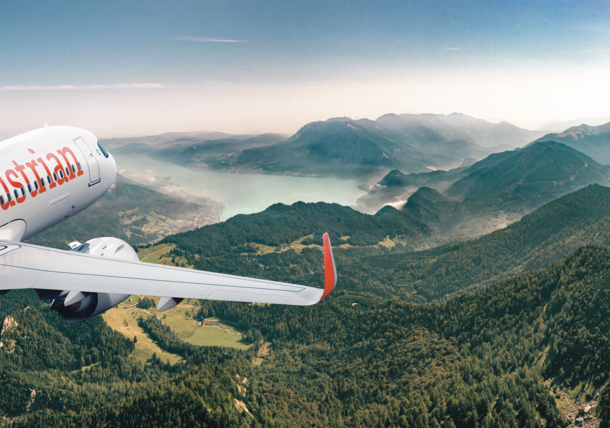 Austrian Airlines
Austrian Airlines 
Austrian Airlines welcomes you on board. Austrian Airlines AG, also known as Austrian, is the flag carrier of Austria with a global route network of around 130 destinations and 360 flights per day. The airline is headquartered on the grounds of Vienna International Airport in Schwechat where it also maintains its hub. Vienna Airport is in the heart of Europe and so the ideal starting point for travelling in Central and Eastern Europe and it links Vienna with more than 40 destinations in these regions. Thanks to the partnership with Lufthansa, Austrian Airlines is now a member of the largest airline company in Europe. In addition to hygiene and security measures, suitable flight times are particularly relevant for business travellers within Europe. The majority of European business destinations are available daily, in some cases up to three times a day, and are served by Austrian Airlines at the start and end of the day with direct connections from the Vienna hub. With New York, Washington, Chicago, Bangkok, Shanghai, Tokyo, Tel Aviv and Montreal, Austrian Airlines also has long-haul destinations for business travellers in its flight program. In addition, the other airlines within the Lufthansa Group and their hubs provide access to further attractive destinations worldwide. However, with a few exceptions, travel restrictions still apply to Austrians to many intercontinental destinations.
Austrian's slogan is "the charming way to fly".
Austrian Airline՛s fleet divided into the long-haul fleet and the short and medium-haul fleet: the aircraft types Airbus 321-211, Airbus 321-111, Airbus 320-200, Airbus 319-111 and Embraer 195 as well as Bombardier Q400 are in service. On long-haul flights, you will always fly in one of Boeing 767-300ER or 777-200ER aircraft.
The airline was formed in 1957 by the merger of Air Austria and Austrian Airways but traces its history back to 1923 at the founding of Austrian Airways. Throughout much of the company's existence, it was a state-owned entity.
In the 1990s, the airline sought out new strategic alliances, as well as to expand its presence in the long-haul market, launching new services to China and South Africa. In 2000, Austrian became a member of Star Alliance; a few years prior, it had also joined the Qualiflyer Group.
During the 2000s, the airline expanded through the acquisitions of Rheintalflug and Lauda Air and adopted the shortened Austrian name in 2003. Throughout the 2000s, Austrian sustained several years of losses; during 2008, the airline's then-owner, the Austrian government, was advised to privatise Austrian via its sale to a foreign company.
In 2009, the Lufthansa Group purchased Austrian after receiving approval from the European Commission following an investigation into the tendering process. Following its privatisation, both fleet expansion and cost-saving initiatives were enacted as the business was restructured; visible changes included route alterations, a new corporate design, and a revised aircraft livery.
With the platform Compensaid, Austrian Airlines offers the possibility to compensate for CO2 emissions. Flights can be compensated either through the use of sustainable aviation fuel (SAF), through the support of certified climate protection projects or a combination of both options.
Austrian Airlines holds 4-Star Airline status from Skytrax for the quality of its airport and onboard products and staff service. Product rating includes seats, amenities, food & beverages, IFE, cleanliness etc, and service rating is for both cabin staff and ground staff.